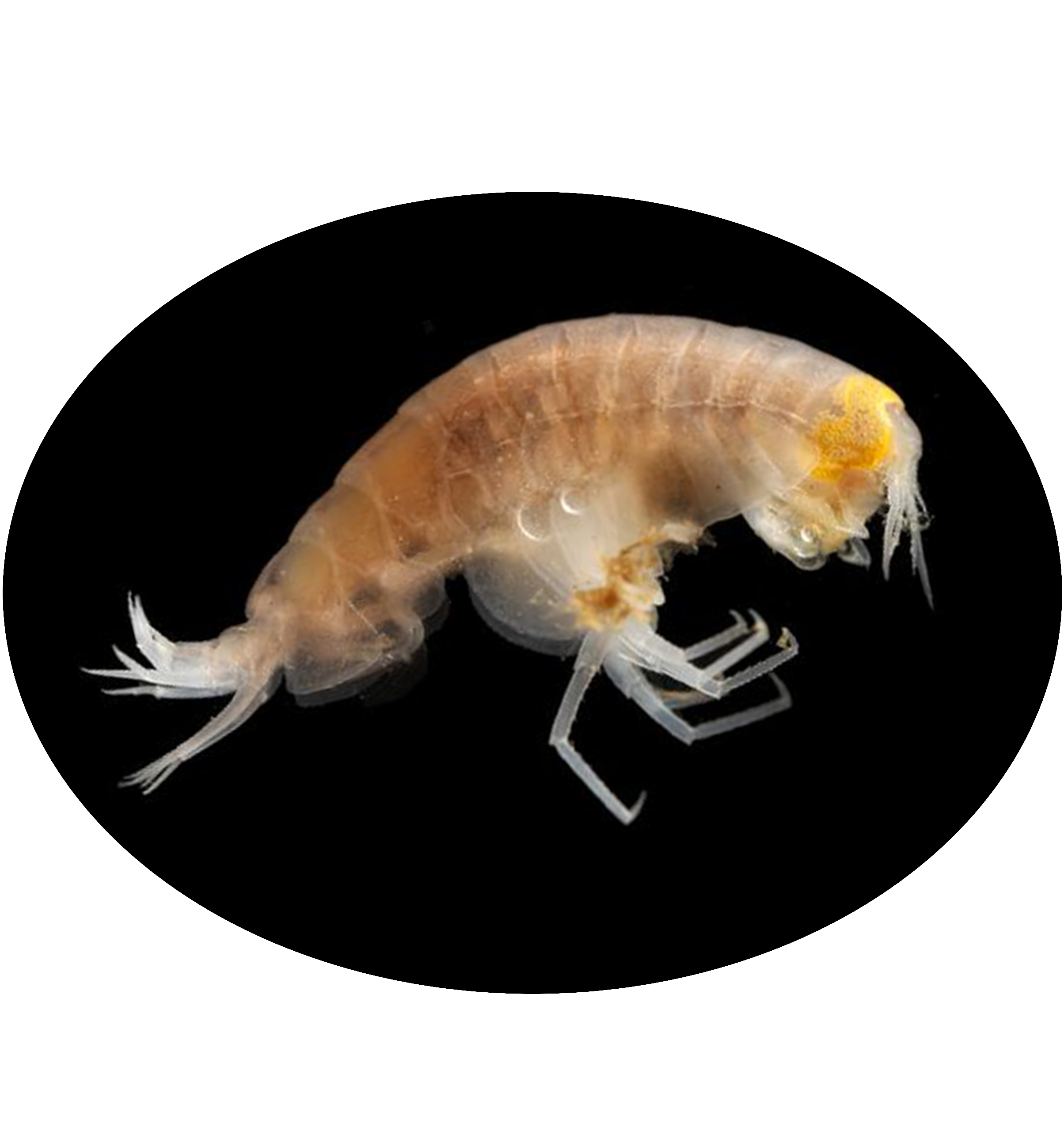
Hirondellea gigas is a species of amphipod crustacean found in the hadal zone of the Pacific Ocean, particularly in the Mariana Trench. It is adapted to extreme deep-sea environments, living at depths exceeding 10,000 meters where pressures are immense and temperatures are near freezing. This species feeds on organic matter that sinks to the ocean floor, playing a crucial role in the deep-sea ecosystem as a scavenger. Its unique adaptations, such as a lightweight exoskeleton and specialized enzymes, allow it to survive and thrive in one of the most extreme habitats on Earth.
Animalia (Kingdom); Arthropoda (Phylum); Crustacea (Subphylum); Multicrustacea (Superclass); Malacostraca (Class); Eumalacostraca (Subclass); Peracarida (Superorder); Amphipoda (Order); Amphilochidea (Suborder); Lysianassida (Infraorder); Lysianassidira (Parvorder); Lysianassoidea (Superfamily); Hirondelleidae (Family); Hirondellea (Genus); Hirondellea gigas (Species)
Tetronychia gigas Birstein & M. Vinogradov, 1955
Philippine Trench from Philippine Sea, Mariana Trench from North Pacific Ocean and Kuril-Kamchatka Trench
| Species | Phylum | Common Name | Ecosystem | Depth | Habitat | NCBI Taxonomy ID |
|---|---|---|---|---|---|---|
| Hirondellea gigas | Arthropoda | - | Deep sea | 6,800-11,000 | Mariana Trench in the northwestern Pacific Ocean | 1518452 |
| Genome Assembly | Genome Size | Assembly level | Released year | WGS accession | Submitter | BioProject | BUSCO completeness (%) | Scaffold/Contig N50 (kb) | GC content (%) | Repeat Rate (%) | Gene Number |
|---|---|---|---|---|---|---|---|---|---|---|---|
| - | 13.92Gb | Chromosome | 2025 | CNA0142381 | - | CNP0005374 | 89.34 | 458,700/466.1 | 38.8 | 72.75 | 27,881 |
| Title | Journal | Pubmed ID |
|---|---|---|
| The amphipod genome reveals population dynamics and adaptations to hadal environment | Cell | 40054448 |
| Gene ID | Description |
|---|---|
| Hgig_17297 | NEL HOMOLOG |
| Hgig_17298 | TRANSPOSABLE ELEMENT TC3 TRANSPOSASE-LIKE PROTEIN |
| Hgig_17299 | ARMADILLO REPEAT-CONTAINING PROTEIN 4 ARMC4 |
| Hgig_17300 | |
| Hgig_17301 | |
| Hgig_17302 | |
| Hgig_17303 | G-PROTEIN COUPLED RECEPTOR TKR-1-RELATED |
| Hgig_17304 | |
| Hgig_17305 | |
| Hgig_17306 | |
| Hgig_17307 | |
| Hgig_17308 | |
| Hgig_17309 | PROTEIN CBG20215-RELATED |
| Hgig_17310 | LUPUS LA PROTEIN-RELATED |
| Hgig_17311 | SERINE PROTEASE-RELATED |
| Hgig_17312 | |
| Hgig_17313 | |
| Hgig_17314 | |
| Hgig_17315 | |
| Hgig_17316 | |
| Hgig_17317 | ENDONUCLEASE-RELATED |
| Hgig_17318 | |
| Hgig_17319 | |
| Hgig_17320 | |
| Hgig_17321 | SLD5 PROTEIN |
| Hgig_17322 | SLD5 PROTEIN |
| Hgig_17323 | PIGGYBAC TRANSPOSABLE ELEMENT-DERIVED PROTEIN 4 |
| Hgig_17324 | |
| Hgig_17325 | |
| Hgig_17326 | CELL DIVISION CYCLE 16,23,27 |
| Hgig_17327 | UBIQUITIN |
| Hgig_17328 | |
| Hgig_17329 | TWINFILIN |
| Hgig_17330 | SET DOMAIN PROTEINS |
| Hgig_17331 | SET DOMAIN PROTEINS |
| Hgig_17332 | G-PROTEIN COUPLED RECEPTOR |
| Hgig_17333 | ENDO/EXONUCLEASE/PHOSPHATASE DOMAIN-CONTAINING PROTEIN |
| Hgig_17334 | |
| Hgig_17335 | |
| Hgig_17336 | |
| Hgig_17337 | |
| Hgig_17338 | SEC24-RELATED PROTEIN |
| Hgig_17339 | SEC24-RELATED PROTEIN |
| Hgig_17340 | FTP DOMAIN-CONTAINING PROTEIN |
| Hgig_17341 | |
| Hgig_17342 | ACYL-COA-BINDING DOMAIN-CONTAINING PROTEIN 5 |
| Hgig_17343 | |
| Hgig_17344 | DEFECTIVE PROBOSCIS EXTENSION RESPONSE DPR -RELATED |
| Hgig_17345 | DEFECTIVE PROBOSCIS EXTENSION RESPONSE DPR -RELATED |
| Hgig_17346 |

